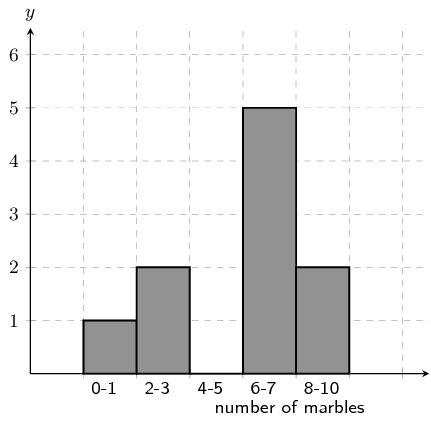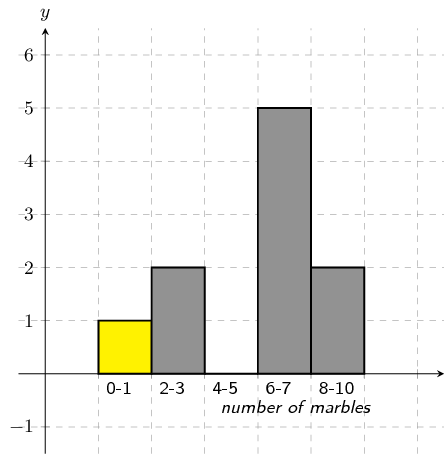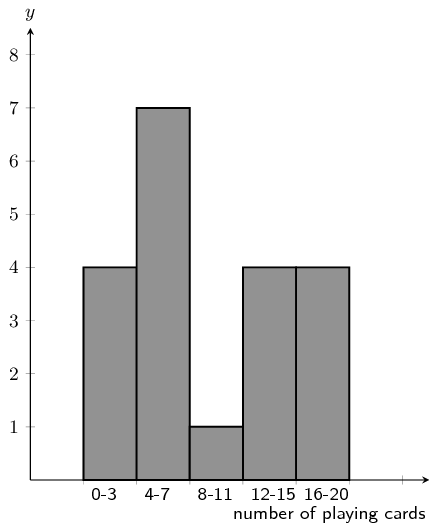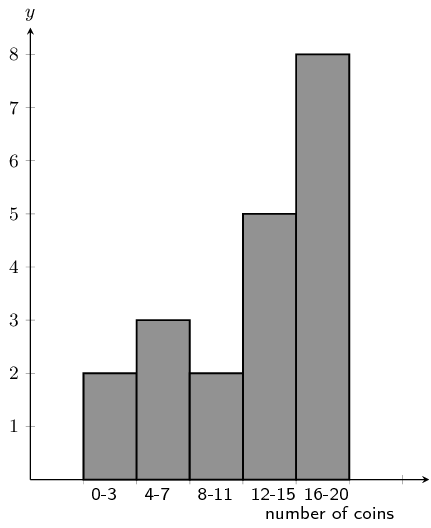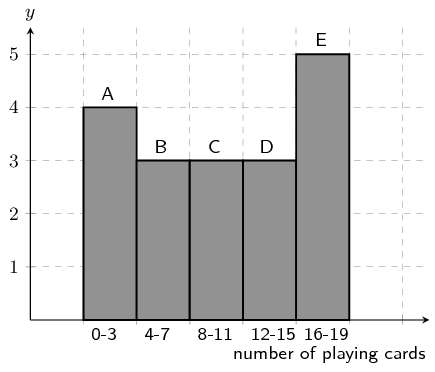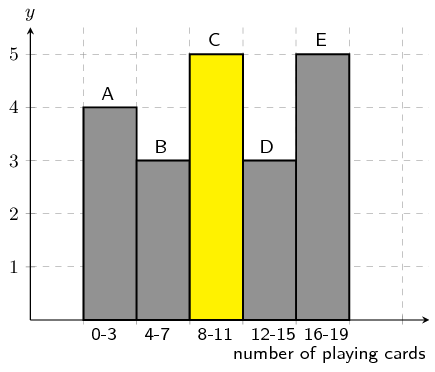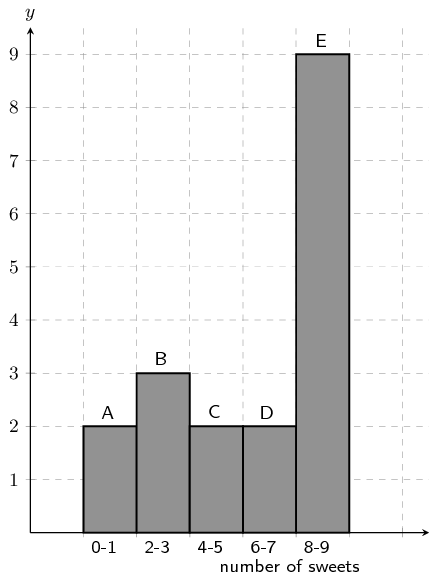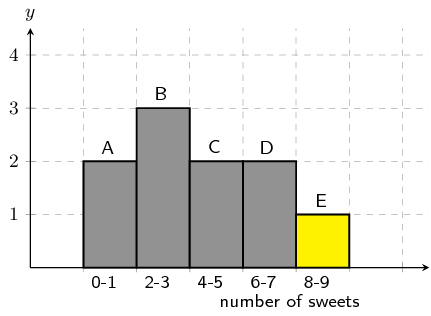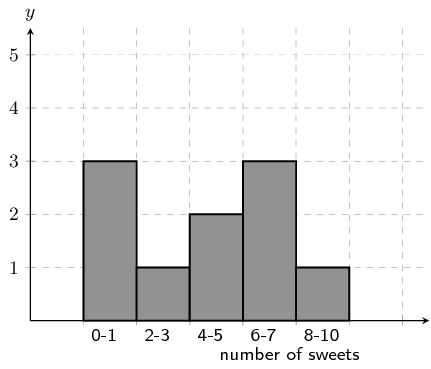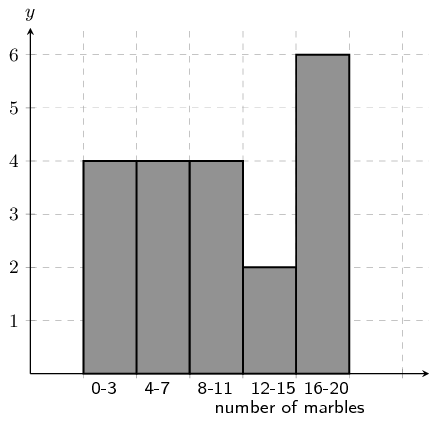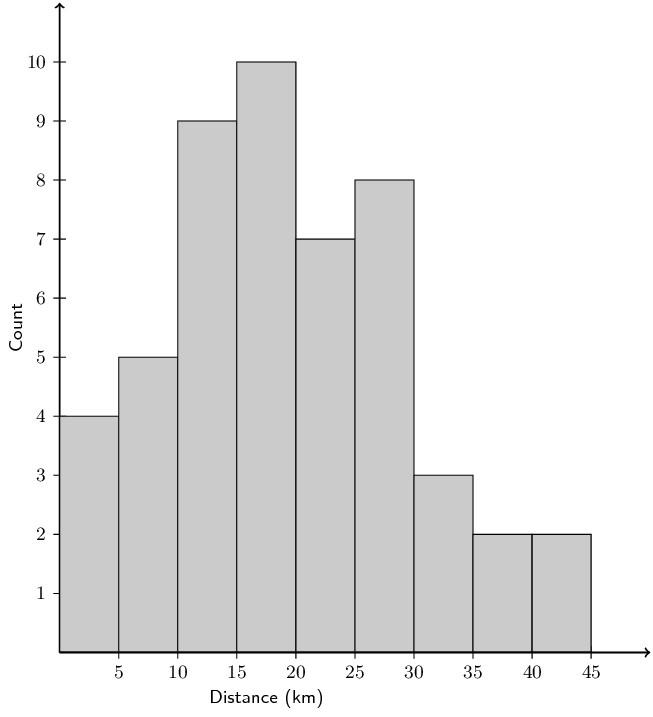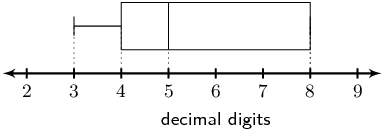First order the data sets for both trained and untrained employees.
Trained: \(118, 120, 121, 125, 126, 127, 128, 129, 130, 130, 131, 132, 134, 135, 137\).
Untrained: \(126, 134, 135, 139, 140, 142, 142, 144, 145, 145, 148, 149, 152, 153, 156\).
There are \(\text{15}\) values in each data set.
Using the percentile formula with \(n = 15\), we can find the rank of the \(25^{\text{th}}\),
\(50^{\text{th}}\) and \(75^{\text{th}}\) percentiles:
\begin{align*}
{r}_{25} & = \frac{25}{100}\left(15 - 1\right) + 1 \\
& = \text{4,5} \\
{r}_{50} & = \frac{50}{100}\left(15 - 1\right) + 1 \\
& = \text{8} \\
{r}_{75} & = \frac{75}{100}\left(15 - 1\right) + 1 \\
& = \text{11,5}
\end{align*}
For the \(25^{\text{th}}\) percentile the rank is \(\text{4,5}\), which is between the fourth and fifth
values. For the \(50^{\text{th}}\) percentile (the median) the rank is \(\text{8}\). Therefore the median
lies at the eighth value. For the \(75^{\text{th}}\) percentile the rank is \(\text{11,5}\), meaning
between the eleventh and \(12^{\text{th}}\) values.
For the trained employees we get:
\(25^{\text{th}}\) percentile: \(\text{125,5}\); median: 129; \(75^{\text{th}}\) percentile:
\(\text{131,5}\).
For the untrained employees we get:
\(25^{\text{th}}\) percentile: \(\text{139,5}\); median: 144; \(75^{\text{th}}\) percentile:
\(\text{148,5}\).

